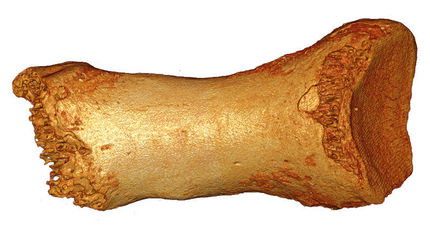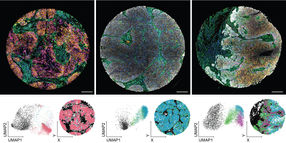VIB scientists present method to reduce error rate in detecting genomic variants by short-read sequencing
Despite advanced genome technologies, it remains a major challenge to identify small variations between the hereditary material (DNA) of different individuals. VIB scientists connected to the K.U.Leuven and the University of Antwerp describe in Nature biotechnology a method that makes it possible to trace genetic variations in the DNA with a high degree of certainty when using short-read sequencing technologies by Complete Genomics and Illumina.
Optimal recognition of “true” genetic differences
Joke Reumers of Diether Lambrechts’ research group (K.U.Leuven) and Peter De Rijk from Jurgen Del-Favero’s group (University of Antwerp) developed a strategy and accompanying software to quickly find genetic differences between two or more genomes, and they can distinguish errors made during the reading of the genomes.
Differences between monozygotic twins
The method was then applied in two studies in which the first ever Flemish genomes were investigated. First of all, it was possible to characterize the minimal genetic differences between the complete genomes of monozygotic twins.
Differences between ovarian cancer tumor and normal tissue
The method was then used on the genomes of a tumor and the normal tissue of a patient with ovarian cancer, making it possible to detect the mutations responsible for the tumor development.
Tracing genetic differences between people
Although the technology to “read” human genomes is already highly advanced, this does not take away from the fact that it remains a major challenge to find the specific differences between two human genomes. The human genome consists of 3 billion “base pairs”, of which about 3 million differ from the so-called reference genome. Between two similar genomes, for example between two related people or between a tumor and the normal cells of the cancer patient, this number is much lower, on the order of tens to thousands. This is the same order of magnitude as the number of errors that are made when reading the genomes, making it very difficult to distinguish the “true” differences from the errors.
By comparison, if you were to put the human genome into book form you would have about 700 books of 1000 pages each. It would be hopeless to try to review these books manually. That is why it is of crucial importance to develop a fast method to automatically, efficiently and accurately find the genetic differences between two people.
Original publication
Reumers et al.; "Optimized filtering reduces the error rate in detecting genomic variants by short-read sequencing."; Nature Biotechnology 2011.
Most read news
Original publication
Reumers et al.; "Optimized filtering reduces the error rate in detecting genomic variants by short-read sequencing."; Nature Biotechnology 2011.
Organizations
Other news from the department science

Get the analytics and lab tech industry in your inbox
From now on, don't miss a thing: Our newsletter for analytics and lab technology brings you up to date every Tuesday. The latest industry news, product highlights and innovations - compact and easy to understand in your inbox. Researched by us so you don't have to.

























































